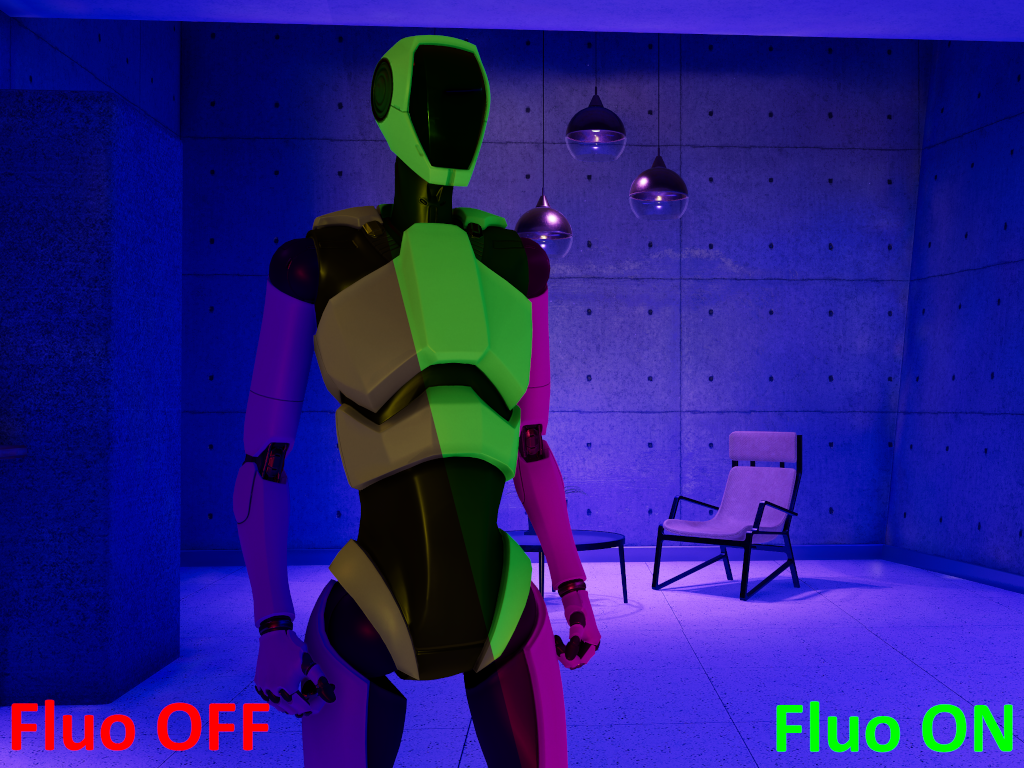6/25/2024
This article was first published in arXiv*.
Fluorescent materials absorb light and reemit it at longer wavelengths. This effect has two significant implications in computer graphics. First, fluorescence introduces color shifts: After an interaction with a fluorescent material, the light hue changes. Second, the absorption and reemission process may transfer light from the ultraviolet (UV) range toward the visual range.
This has the effect of increasing the perceived luminance of fluorescent materials compared with other surrounding materials that only reflect light in the visual range. Fluorescent effects are especially noticeable during dawn or dusk, which is due to Rayleigh scattering: Sunlight (depleted in UV) is less pronounced or absent, making light scattered from the sky (rich in UV) relatively more prominent.
Fluorescence thus has significant potential to increase artistic control over a scene's appearance. However, the few rendering engines that accurately support fluorescence require spectral light transport and assume this is a prerequisite for reproducing wavelength-shifting effects. In contrast, traditional tristimulus light transport employs component-wise vector multiplications that do not readily model hue shifting. Fluorescence is instead merely mimicked in such rendering engines, most often through the addition of an emission term or the use of a higher albedo. Not only may this break energy conservation, but it also neglects the impact of reflections from the surrounding environment on fluorescent appearance, and it entirely neglects light outside the visible spectral range. Even though artists may manually adjust material parameters to visually reproduce a fluorescent appearance, this would be restricted to a specific lighting, forbidding light interaction.
Our goal in this paper is to add support for the accurate reproduction of fluorescence in nonspectral (for example, tristimulus) renderers, with a focus on Lambertian materials. The central idea consists of replacing the classic vector-vector multiplication between the incoming radiance and diffuse albedo with a matrix-vector multiplication where the matrix is obtained by a reduction of the fluorescence reradiation matrix.
Our main contribution lies in a principled reduction method that relies on spectral upsampling and downsampling operators according to an arbitrary set of nonorthogonal functions and produces significantly more accurate results. Since our method is generalizable to any basis, we show that an additional UV band is easily incorporated in our framework to account for reradiation from nonvisible to visible light.
